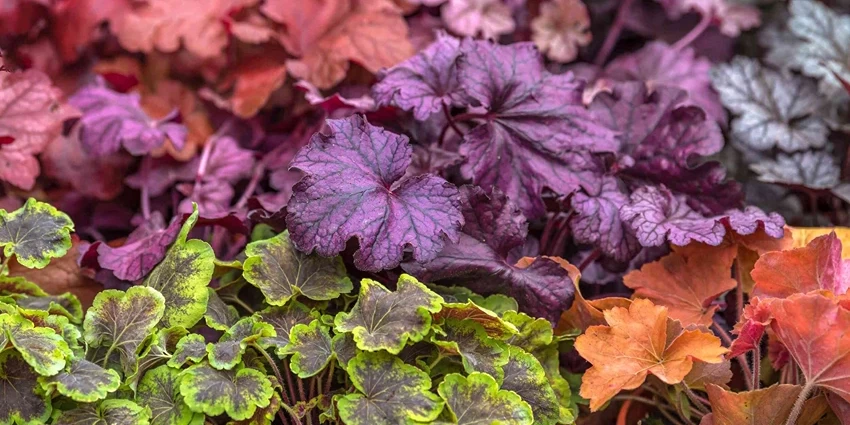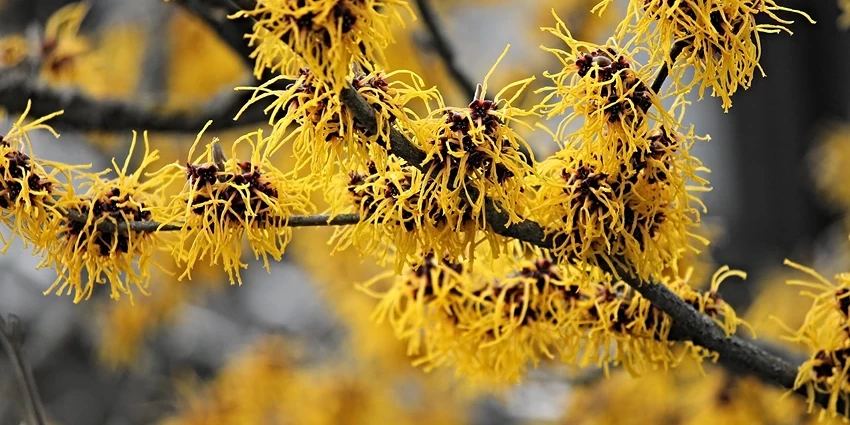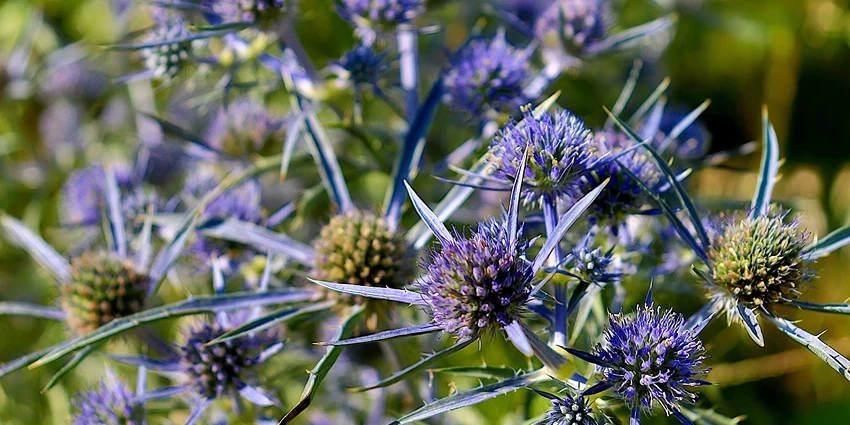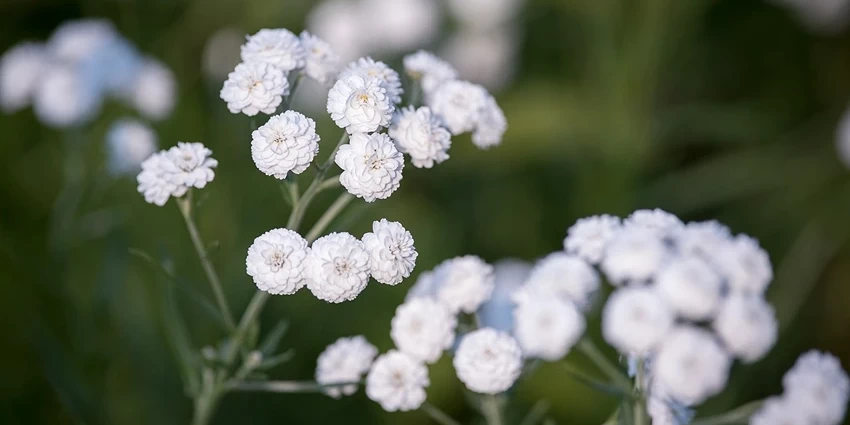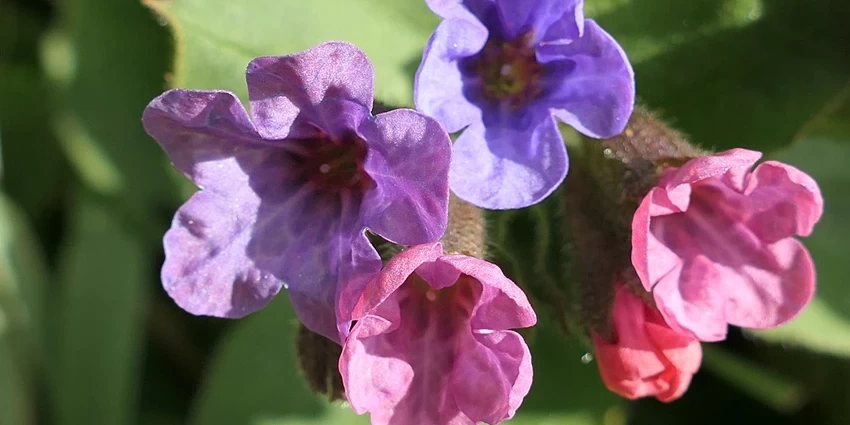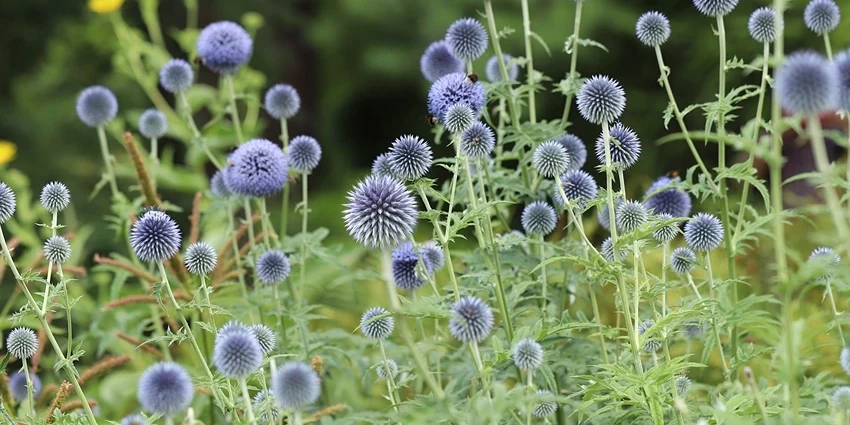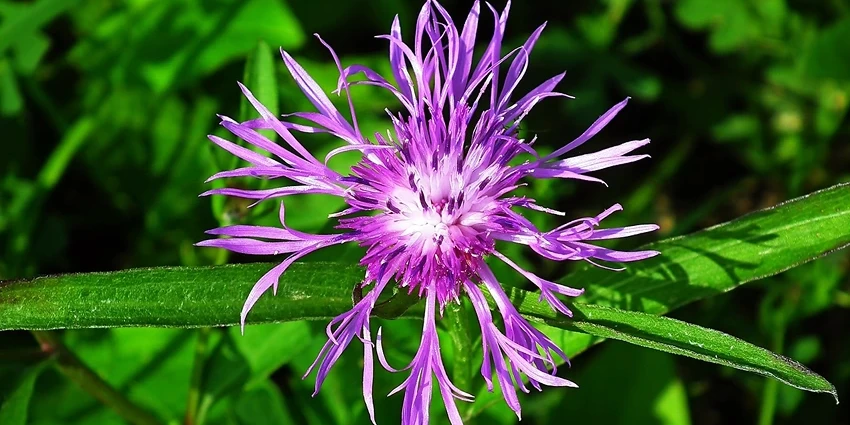All products were chosen independently by our editorial team. This review contains affiliate links and we may receive a commission for purchases made. Please read our affiliates FAQ page to find out more.
Home » Types of Plants » Heuchera spp. (Coral Bells): A Vibrant Addition to Your Garden
Latin Name
Heuchera spp.
Most Commonly Used Where
Gardens, borders
Family
Saxifragaceae
Heuchera spp., commonly known as Coral Bells, are a gardener’s delight, offering a splash of color and texture to any garden setting. Belonging to the Saxifragaceae family, these perennials are prized for their vibrant foliage and delicate bell-shaped flowers. Whether you’re a seasoned gardener or just starting, understanding the nuances of growing and caring for Heuchera can transform your garden into a tapestry of colors.
| Jan | Feb | Mar | Apr | May | Jun | Jul | Aug | Sep | Oct | Nov | Dec | |
|---|---|---|---|---|---|---|---|---|---|---|---|---|
| Plant | ✓ | ✓ | ✓ | |||||||||
| Harvest | ✓ |
Register for our latest in-depth reviews and product round-ups from the experts.
Enter your email address below to receive our monthly review emails.
By entering your details, you are agreeing to our terms and conditions and privacy policy. You can unsubscribe at any time.
Key Takeaways
- Versatile and Colorful: Heuchera spp. are known for their wide range of leaf colors and adaptability to various garden settings.
- Easy Care: Generally low maintenance, they thrive in partial shade and well-draining soil.
- Year-Round Appeal: With evergreen varieties, they provide color throughout the seasons.
- Diverse Uses: Ideal for borders, containers, and as ground cover.
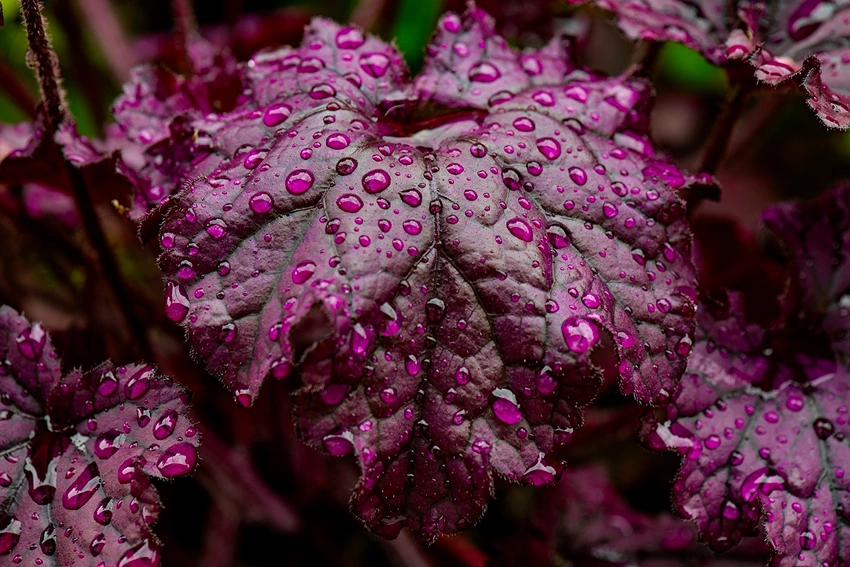
Overview of Heuchera spp. (Coral Bells)
Heuchera spp., or Coral Bells, are a testament to nature’s palette. Originating from North America, these perennials have made their way into the hearts of gardeners worldwide. Their charm lies not just in their flowers but predominantly in their foliage, which comes in a spectrum of colors from green and purple to bronze and silver.
Varieties of Heuchera spp.
There are several species and cultivars of Heuchera, each bringing its unique flair to the garden. Some notable varieties include:
- Heuchera americana: Known for its green to silver leaves and white flowers.
- Heuchera sanguinea: Offers bright red flowers, making it a standout choice.
- Heuchera villosa: Prized for its large, hairy leaves and tolerance to heat and humidity.
- Heuchera parviflora: Features smaller flowers and a more compact growth habit.
Each of these varieties contributes to the diversity of the Heuchera family, making it a versatile choice for gardeners.
Cultivation and Care
Growing Heuchera is relatively straightforward, but a few tips can help ensure their success in your garden.

Ideal Growing Conditions
- Light: They prefer partial to full shade, but some varieties can tolerate more sun.
- Soil: Well-draining, fertile soil is ideal.
- Climate: Heuchera spp. are hardy in most temperate climates.
Planting and Propagation
- Planting: Spring or autumn is the best time to plant Heuchera.
- Propagation: Can be done through division or from seed.
Maintenance and Care
- Watering: Regular watering is essential, especially in dry conditions.
- Feeding: A balanced fertilizer applied in spring can promote healthy growth.
- Pruning: Remove any damaged or old leaves to maintain appearance.
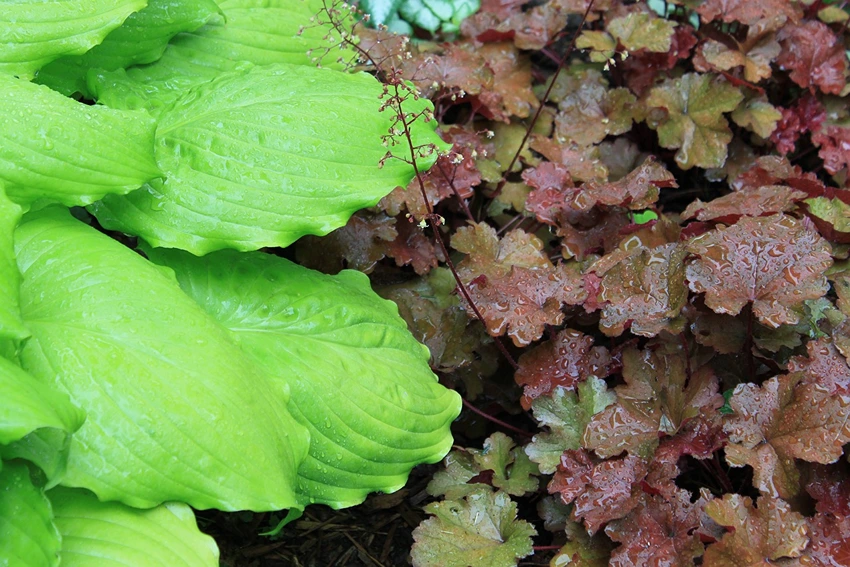
Ornamental Uses of Coral Bells
Heuchera spp. are not just plants; they’re a statement. Their vibrant foliage and delicate flowers make them perfect for:
- Borders: They create a stunning edge to garden beds.
- Containers: Ideal for adding color to patios and balconies.
- Ground Cover: Their dense foliage can cover bare spots effectively.
Health and Disease Management
While Heuchera spp. are generally robust, they can encounter some health challenges. Awareness and preventive measures can ensure your Coral Bells remain vibrant and healthy.
Common Pests and Diseases
- Rust: Causes orange to brown spots on leaves.
- Root Rot: Often due to overwatering or poor drainage.
- Aphids and Weevils: Can cause damage to leaves and roots.
Prevention and Treatment Strategies
- Regular Inspection: Early detection is key to managing pests and diseases.
- Proper Watering: Avoid overwatering and ensure good soil drainage.
- Organic Treatments: Use neem oil or insecticidal soaps for pest control.
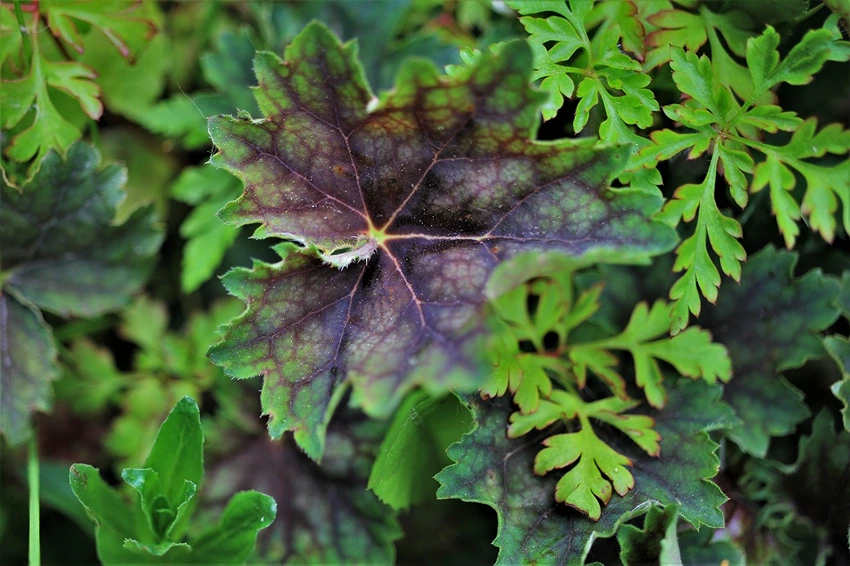
Breeding and Hybridization
Heuchera spp. have been the subject of extensive breeding, resulting in a wide array of cultivars with varied colors, textures, and sizes.
Techniques in Breeding Heuchera spp.
- Cross-Pollination: To combine desirable traits from different varieties.
- Selection: Choosing the best specimens for further propagation.
Notable Hybrid Varieties
- Heuchera ‘Palace Purple’: Known for its deep purple leaves.
- Heuchera ‘Caramel’: Offers caramel-colored foliage and robust growth.
Environmental Impact and Sustainability
Heuchera spp. not only add beauty to gardens but also contribute positively to the environment.

Ecological Benefits of Heuchera spp.
- Attracts Pollinators: Their flowers are a food source for bees and butterflies.
- Low Water Requirement: Makes them suitable for sustainable gardening practices.
Sustainable Gardening Practices with Coral Bells
- Companion Planting: They pair well with other shade-loving plants.
- Organic Gardening: Avoid chemical fertilizers and pesticides to maintain a healthy ecosystem.
Frequently Asked Questions
Let’s address some common queries about Heuchera spp. to help you in your gardening journey.
Water when the top inch of soil feels dry. Avoid overwatering.
Some varieties can tolerate full sun, but most prefer partial shade.
Early spring or autumn is ideal for division.
Ensure adequate light and use a balanced fertilizer in spring.
Yes, they are generally not favored by deer.
In conclusion, Heuchera spp. (Coral Bells) are a dynamic and resilient addition to any garden. Their diverse range of colors, ease of care, and environmental benefits make them a favorite among gardeners. By understanding their needs and characteristics, you can enjoy the full beauty and benefits these plants have to offer.
Where to buy coral bells
Oliver, a creative powerhouse and gardening enthusiast, brings a unique blend of scientific knowledge and artistic flair to BritishGreenThumb.co.uk. Growing up in the vibrant city of Brighton, Oliver's earliest memories involve exploring the city's picturesque parks and gardens, which sparked his lifelong passion for horticulture.


